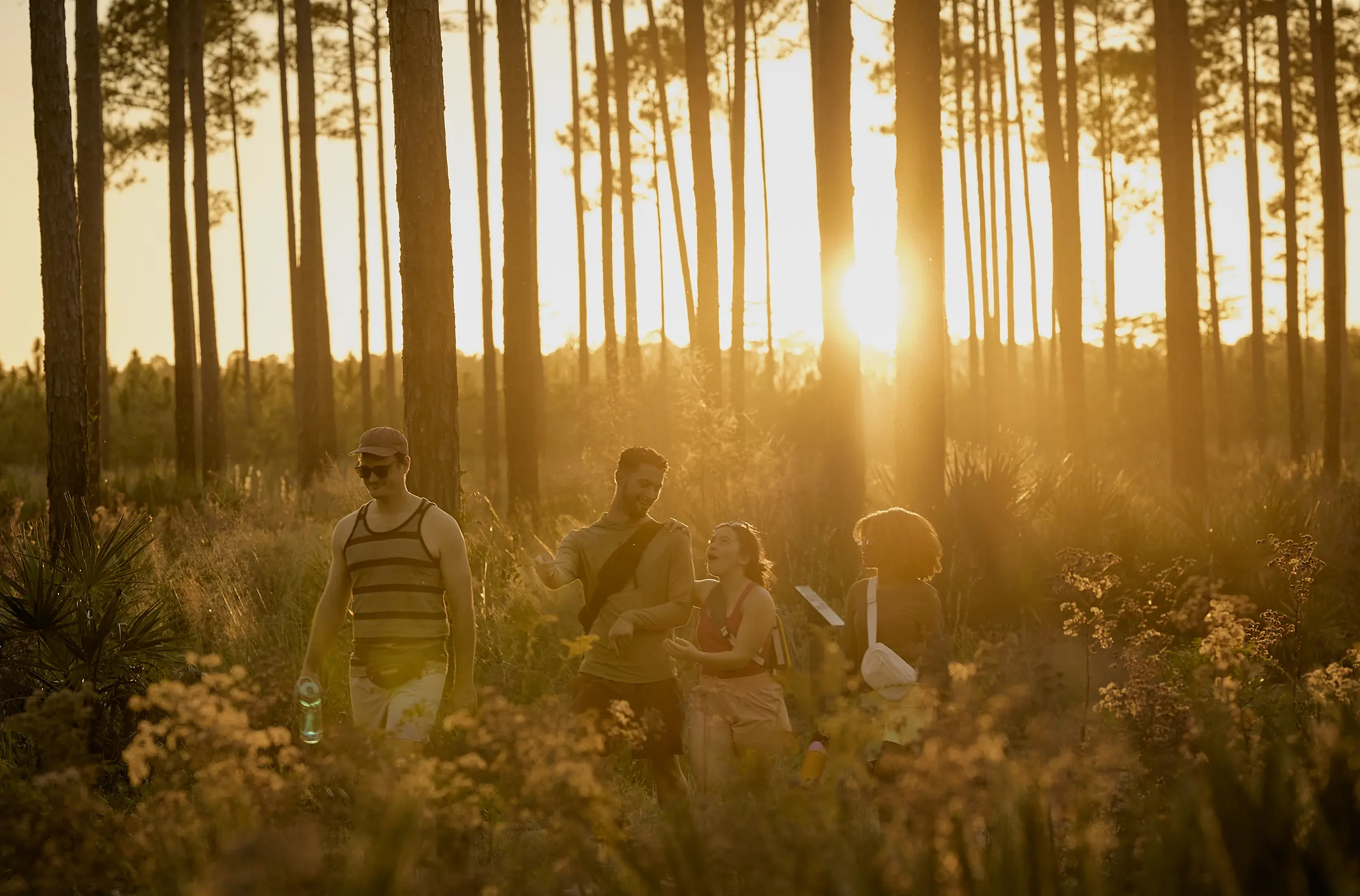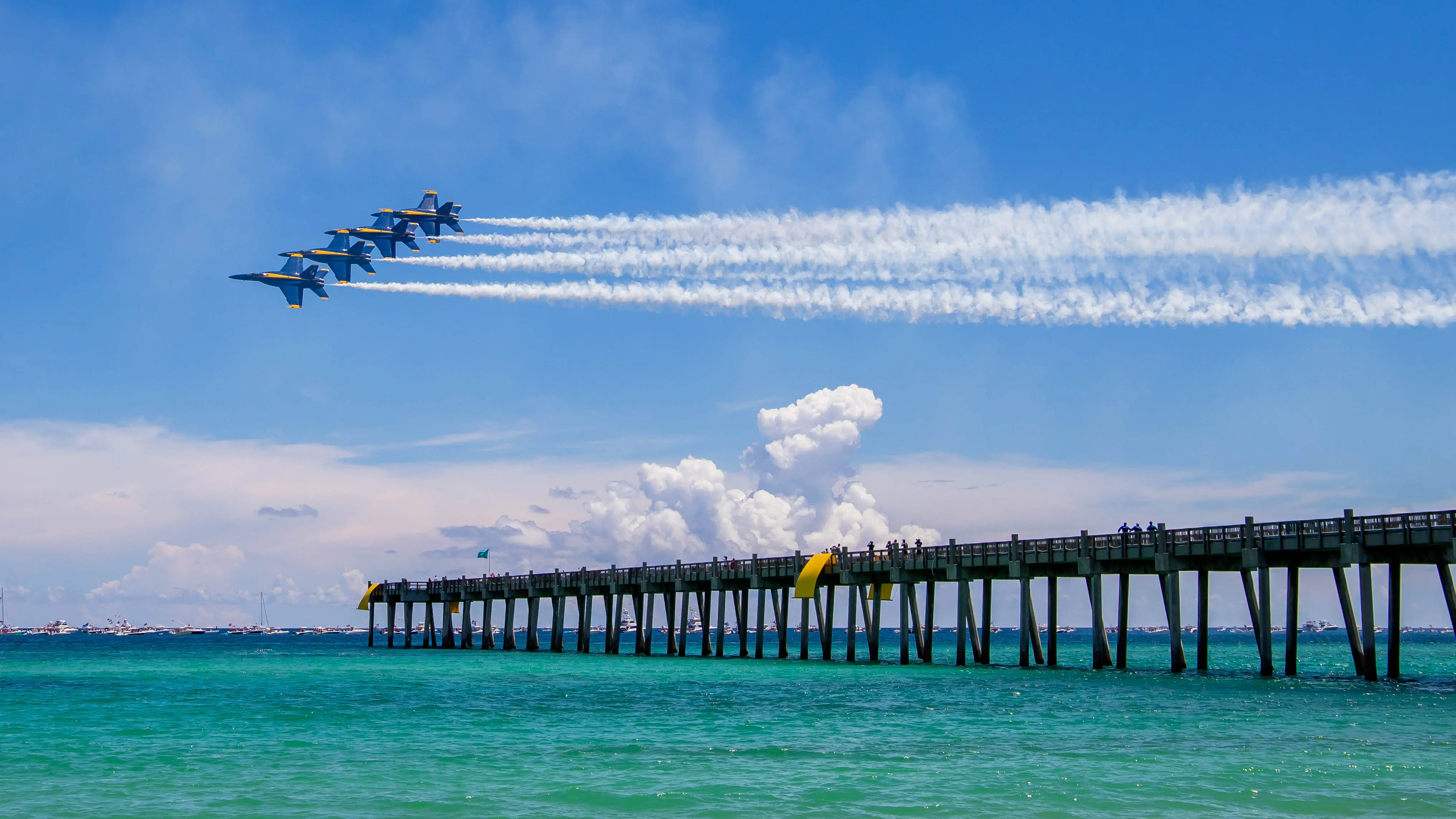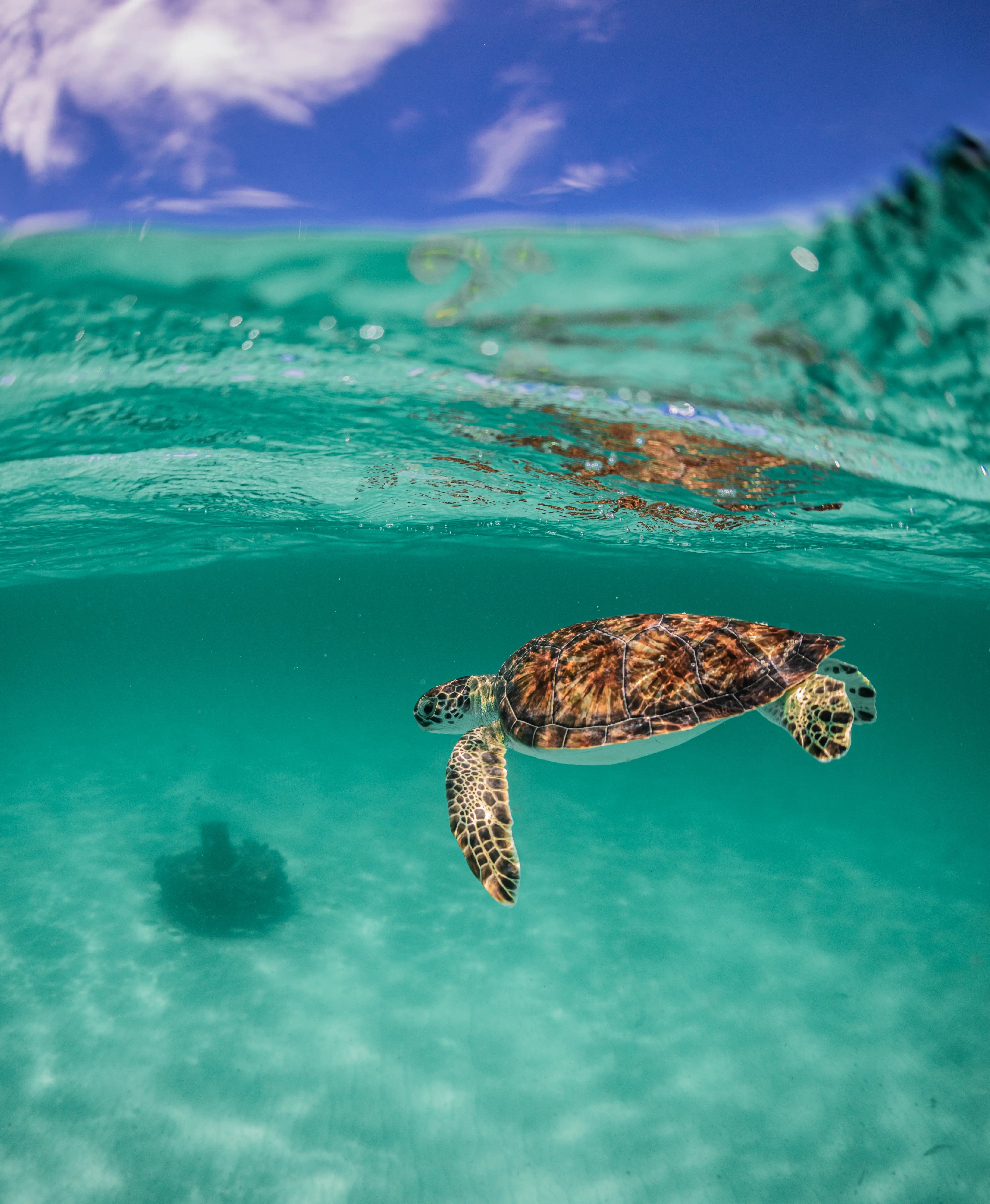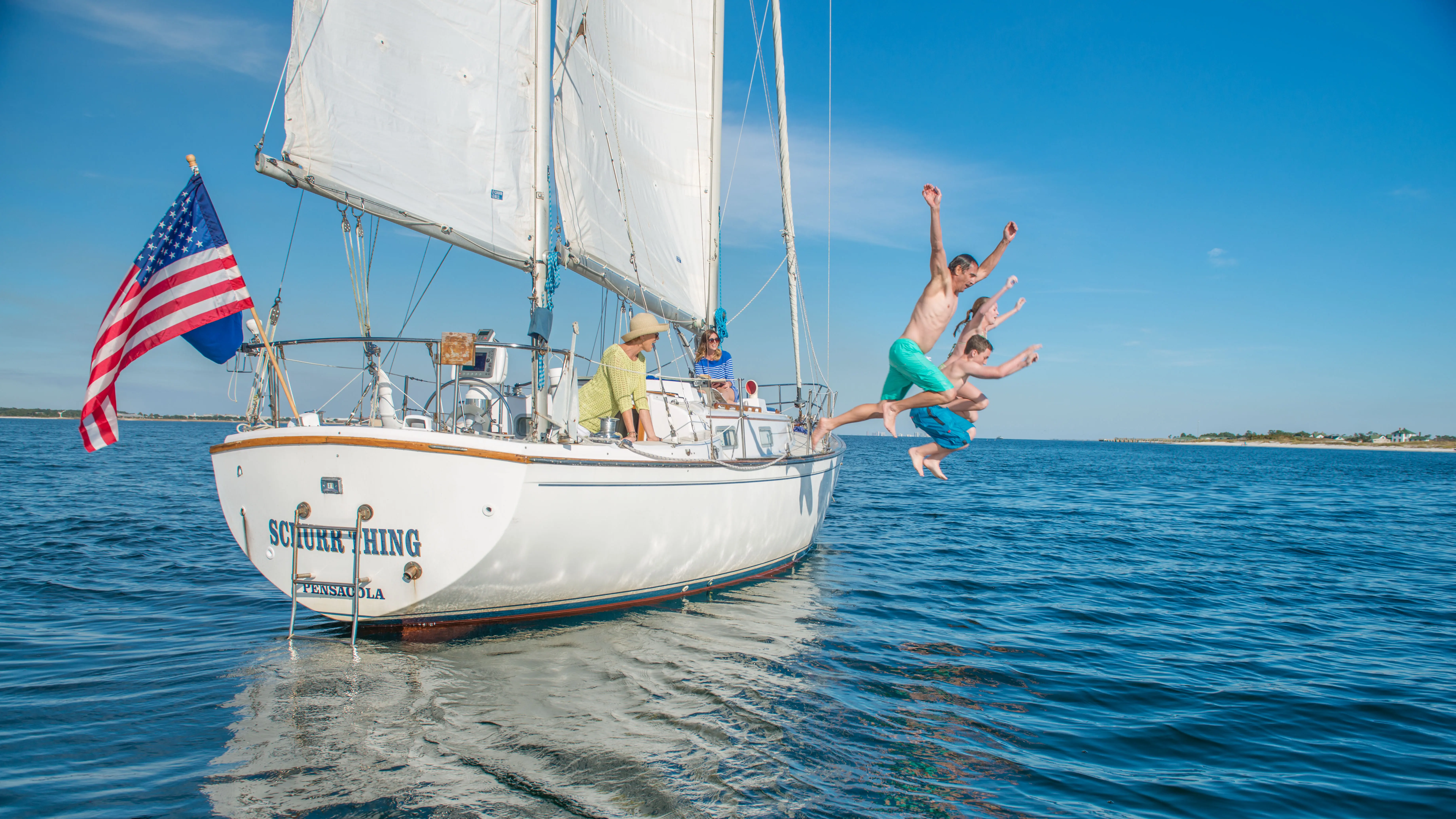Hiking.

Northwest Florida's varied hiking trails are perfect when you need a day off the water.

Fly high and feel the roar of the U.S. Navy Blue Angels
Pensacola is lucky to be the home base for the U.S. Navy Blue Angels, the official flight demonstration team of the Navy. While they tour all over the country, we’re fortunate that they practice most Tuesdays and Wednesdays, March – November and host two shows a year, one on Pensacola Beach and one at NAS Pensacola.

Pedal your way to adventure
With popular trails like the Edward Ball Nature Trail and the Gulf Islands National Seashore, there are multiple places to bike for all levels. For the non-traditionalist, book an electric bike.
Good to Know
A diverse ecosystem that ranges from coastal areas with pristine beaches to inland forests and wetlands makes Northwest Florida perfect for nature lovers who want to explore a variety of landscapes, including pine forests, marshes, and dunes.
Here’s what you need to know:
Diverse Environments
Northwest Florida is home to a range of environments that make hiking here diverse:
- Coastal Dunes and Beaches: The Gulf Coast features beautiful white sand beaches and coastal dune ecosystems. You'll find some of the best trails within the Gulf Islands National Seashore, where you can walk along the beach or explore the coastal forests and dunes.
- Wetlands: The region is home to unique wetlands like the Blackwater River State Forest, with trails through cypress swamps, bogs, and floodplains.
- Pine Forests and Hardwood Forests: Hiking trails through pine forests, like those in the Apalachicola National Forest, offer shady paths and beautiful scenic views.
Wildlife and Natural Attractions
The region is teeming with wildlife. Some animals and plants you might encounter include:
- Birdwatching: The region is a birdwatcher’s paradise, with species like the bald eagle, woodpeckers, herons, and osprey. It’s common to spot migratory birds, especially in coastal areas.
- Reptiles and Amphibians: Keep an eye out for alligators, turtles, and snakes, particularly in wetland areas.
- Unique Wildflowers and Plants: The diverse ecosystems support a variety of plants, including carnivorous species like pitcher plants in wetland areas.
Seasonal Considerations
- Spring and Fall are the best seasons for hiking in terms of pleasant temperatures and less humidity.
- Summers can be hot and humid, with temperatures regularly in the 90s°F (30s°C) and frequent afternoon thunderstorms. It’s best to start hikes early in the morning to avoid the heat.
- Winter: Winters are mild, with temperatures ranging from the 40s°F (5–10°C) to the 60s°F (15–20°C), making it a great time for hiking.
Level of Difficulty
Most of the hiking trails in Northwest Florida range from easy to moderate difficulty, with a few longer and more challenging options. Many trails are relatively flat, making them suitable for beginners and families.
Safety Tips
- Mosquitoes and ticks can be prevalent, especially in marshy or wetland areas. Wearing insect repellent and long sleeves/pants is advisable, especially in spring and summer.
- Be prepared for high humidity and heat during the summer months. Bring plenty of water, wear sunscreen, and take breaks in the shade.
- While encounters with dangerous animals are very rare, it’s important to be always be aware and stay on designated trails and avoid approaching wildlife.
- Many trails are well-marked, but it’s still a good idea to carry a map or use a trail app for navigation.
Leave No Trace
As with any outdoor activity, it’s important to follow Leave No Trace principles. Carry out all trash, stay on marked trails, and respect the environment to help preserve the natural beauty for its wildlife inhabits and future generations.
Outfitters you can count on
What people are
exploring
What is your adventure style?
your next great Northwest Florida adventure.

Count Me In
Stay up-to-date with all the latest and greatest that Northwest Florida Beaches has to offer.


